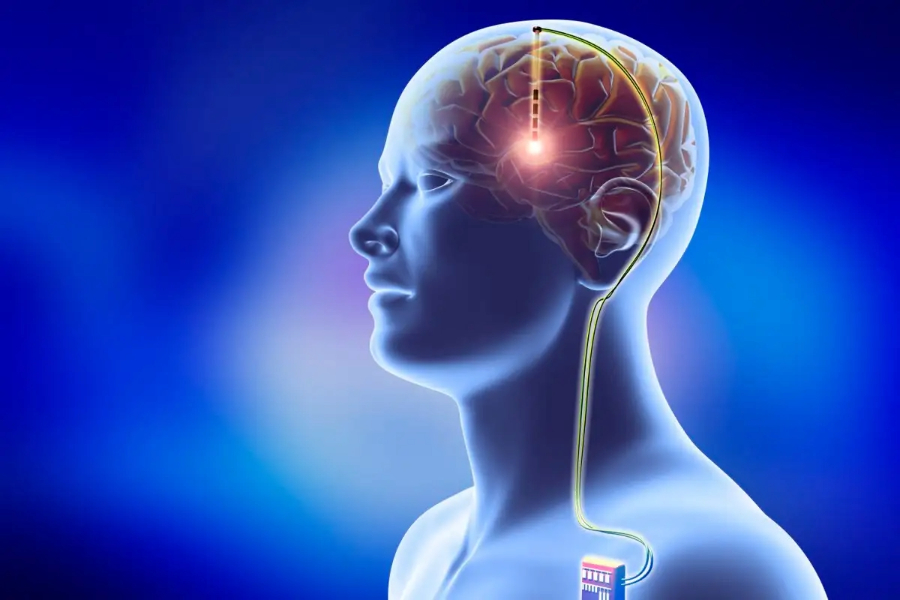Neural Implants
Brain implants, also known as neural implants or brain-computer interfaces (BCIs), are devices that connect directly to the brain to record or stimulate neural activity. These devices have shown promise in various applications, including helping individuals with paralysis control external devices, such as prosthetic limbs or computers, using their thoughts.
In 2019, scientists at the University of California, San Francisco, reported success in developing a system that could translate brain signals into synthesized speech. Participants in their study, who had electrodes implanted in their brains, were able to produce sentences on a computer screen just by thinking about speaking.
Till January 2022, there have been significant advancements in brain-machine interface (BMI) technologies, but the direct transformation of thoughts into speech was still in the early stages of development.
Brain implants transform thoughts into speech which was successfully showcased by many scientists from Radboud University and the University Medical Centre Utrecht (UMC Utrecht). It is a machine interface paired with an artificial intelligence (AI) system. Researchers focused on non-paralysed individuals with temporary brain implants, asking them to verbalize given words while monitoring brain signals. Analyzing this data, the team found a direct correlation between brain activity and speech, which they incorporated into AI models to convert thoughts into speech.
Process Involved
The process generally involves neural recording, decoding of neural signals, and speech synthesis. Here is a more detailed breakdown of the techniques involved:
- Neural Recording:
Invasive Electrode Implantation – Thin electrodes are surgically implanted into specific areas of the brain associated with speech and language. These electrodes can be placed on the surface of the brain (electrocorticography or ECoG) or inserted into the brain tissue (intracortical electrodes).
Non-Invasive Techniques – While less direct, non-invasive techniques such as electroencephalography (EEG) or functional magnetic resonance imaging (fMRI) may be used to record neural signals from the scalp. However, these methods are less spatially and temporally precise compared to invasive methods.
- Data Collection and Preprocessing:
Collected neural signals are processed to extract relevant information. This step involves filtering, amplifying, and digitizing the signals to prepare them for analysis.
- Decoding Neural Patterns:
Advanced signal processing and machine learning algorithms are employed to decode the neural patterns recorded by the electrodes. These algorithms learn to associate specific neural patterns with intended speech, such as phonemes, words, or sentences.
- Mapping to Speech Output:
The decoded neural information is then mapped to a speech output. This can involve synthesizing speech sounds or controlling a speech synthesizer. The goal is to convert the decoded neural information into a format that can be audibly heard.
- Speech Synthesis:
The mapped neural information is used to generate synthetic speech. This may involve using a computerized speech synthesizer that converts the decoded information into spoken words.
Advances in natural language processing (NLP) and speech synthesis contribute to creating more natural and human-like speech.
- Feedback and Calibration:
Continuous feedback is essential for refining the system’s performance. Calibration sessions may be conducted to update the decoding algorithms based on changes in neural activity or the user’s evolving speech patterns.
Advantages
The potential advantages of brain implants that can transform thoughts into speech are multifaceted and can have a significant impact on various aspects of individuals’ lives.
- Restoration of Communication:
One of the most significant benefits is the restoration of communication for individuals with severe speech impairments, such as those resulting from paralysis or conditions like ALS. Brain implants can provide a means for these individuals to express themselves and communicate effectively.
- Improved Quality of Life:
Individuals who have lost the ability to speak due to neurological conditions or injuries may experience an enhanced quality of life by regaining the ability to communicate with their loved ones, caregivers, and the broader community.
- Independence for People with Disabilities:
Brain implants that enable speech could enhance the independence of individuals with disabilities. They may be able to control devices, access information, and interact with their environment more autonomously.
- Enhanced Human-Machine Interaction:
The technology could enable more natural and intuitive interaction with computers and other electronic devices. Users might be able to control devices or interfaces simply by thinking, reducing the reliance on traditional input methods.
- Potential for Neurorehabilitation:
The development of brain implants might open new avenues for neurorehabilitation, helping individuals recover or adapt to changes in their neural functioning. This could have implications for stroke survivors, traumatic brain injury patients, and others undergoing rehabilitation.
- Innovation in Personalized Medicine:
Advances in brain-machine interfaces could pave the way for more personalized medical interventions. Tailoring these technologies to individual neurological patterns and needs could optimize their effectiveness.
Conclusion
Moreover, ethical considerations, user safety, and ongoing improvements in technology are critical aspects of developing brain implants for thought-to-speech applications.
Source:
- https://www.deltecbank.com/2023/06/23/what-are-neural-implants/?locale=en
- https://www.electronicsforu.com/news/brain-implants-transformed-thoughts-into-speech
- https://www.bitsathy.ac.in/fuzzy-graphs-in-neural-networks/

